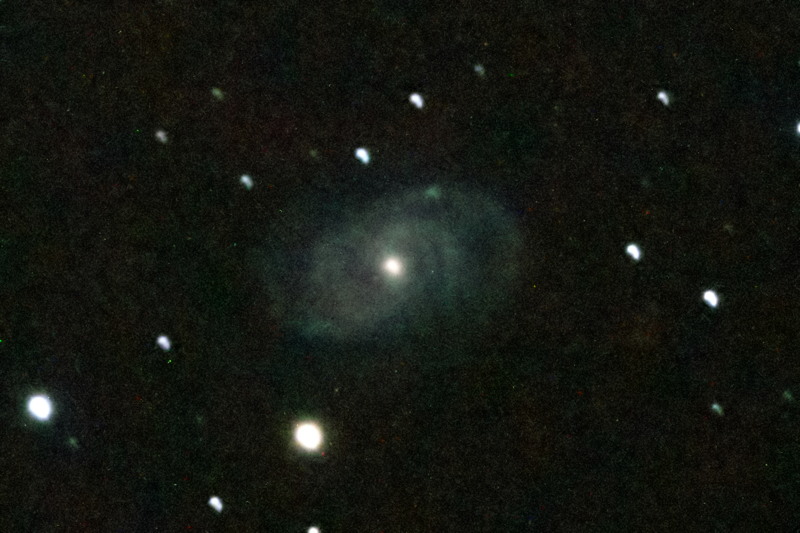
Images: Critters and Small Faint Galaxies
Posted: 9 June 2012
On the way to the observatory on Thursday, 7 June 2012, I checked on the baby bird (only one of the original four remaining):

I was greeted by this guy:

Opened the observatory at 1921 MST, 92°F, to clear skies. No wind. My plan for the night was to image 7 of the 15 small, faint galaxies I observed on the previous session. Beginning at 1930 MST, viewed Saturn, 77X, 206X, and 364X. Cassini Division was very distinct at 364X, and visible around much of the Ring.
At 2000 MST, I began preps for the night's imaging. Saw the first Kissing Bug of the night. At 2015 MST, slewed the 8" LX200-ACF to NGC5669, the first imaging target, and began waiting for the sky to get darker. At 2035 MST, mounted the D7000 DSLR at prime focus + Off-Axis Guider. Did a focus test on Spica using a Bahtinov Mask, then locked the focus. I began imaging at 2050 MST and continued until 2310 MST. I was not able to find good guide stars for all the exposures, but I did took images anyway. I will redo the ones that trailed. All of the following images are guided (as best as possible), cropped (all to the same scale), 5 minutes, ISO 6400, and processed in Aperture and Neat Image (noise reduction software).
NGC5669

NGC5676

NGC5678

NGC5985

NGC5861

NGC5921

NGC5395

NGC5371

NGC5383

Yes, I actually did 9 of the 15 small, faint galaxies.
At 2330 MST, before closing up for the night since the eastern sky was brightening due to the rising waning gibbous moon, viewed the M4 globular cluster, 77X.
Closed the observatory at 2341 MST, 72°F. During this session, I reduced the worldwide population of Kissing Bugs by 2, which was all I saw.
Comments are welcome; use the Comments section below, or you can Email Me. Thanks.
Go to the previous report.
Return to the Cassiopeia Observatory Welcome Page.